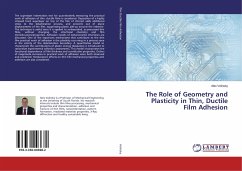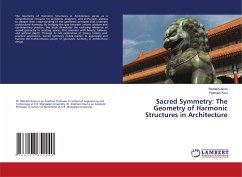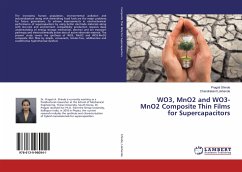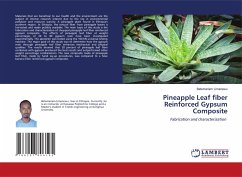
The Role of Geometry and Plasticity in Thin, Ductile Film Adhesion
Versandkostenfrei!
Versandfertig in 6-10 Tagen
46,99 €
inkl. MwSt.

PAYBACK Punkte
23 °P sammeln!
The superlayer indentation test for quantitatively measuring the practical work of adhesion of thin, ductile films is considered. Deposition of a highly stressed hard superlayer on top of the film of interest adds additional stress to the delamination process, and prevents out of plane displacements of the film, suppressing plastic pile-up around the indenter. The technique is useful since it is applied to as-deposited, as-processed thin films, without changing the interfacial chemistry and film microstructure/properties. Adhesion results of metal-ceramic interfaces are discussed. One of the i...
The superlayer indentation test for quantitatively measuring the practical work of adhesion of thin, ductile films is considered. Deposition of a highly stressed hard superlayer on top of the film of interest adds additional stress to the delamination process, and prevents out of plane displacements of the film, suppressing plastic pile-up around the indenter. The technique is useful since it is applied to as-deposited, as-processed thin films, without changing the interfacial chemistry and film microstructure/properties. Adhesion results of metal-ceramic interfaces are discussed. One of the important mechanisms that contribute to the thin film practical work of adhesion is the plasticity occurring in a process zone in the vicinity of the delamination boundary. A quantitative model to characterize the contributions of plastic energy dissipation is introduced to rationalize experimental adhesion assessments. This model incorporates the functional dependence of film thickness and constitutive properties. Orders of magnitude increases in practical work of adhesion were both observed and predicted. Temperature effects on thin film mechanical properties and adhesion are also considered.












